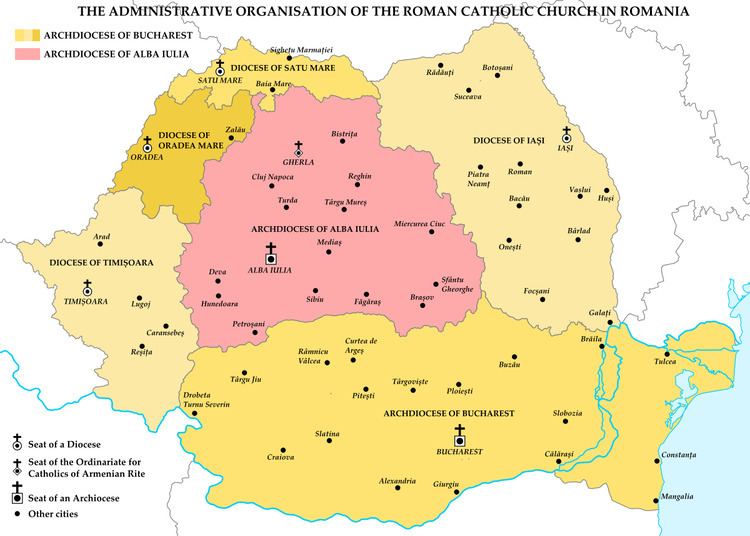Parishes 256 Auxiliary bishop József Tamás | Area 58,254 km² | |
 | ||
Metropolitan Immediately Subject to the Holy See Population- Total- Catholics (as of 2012)4,017,600440,700 (11%) Established 1009(As Diocese of Transilvania, Erdély, Siebenbürgen)22 March 1932(As Diocese of Alba Iulia)5 August 1991(Archdiocese of Alba Iulia) Cathedral | ||
Organ rehearsal at the roman catholic archdiocese of alba iulia
The Roman Catholic Archdiocese of Alba Iulia (Hungarian: Gyulafehérvári Római Katolikus Érsekség) is a Latin Church Catholic archdiocese in Transylvania, Romania.
Contents
- Organ rehearsal at the roman catholic archdiocese of alba iulia
- History
- Description
- Population
- References
History
It was established as a bishopric, the diocese of Transylvania also called Erdély (in Hungarian), or Karlsburg alias Siebenbürgen (in German), in 1009 by King Stephen I of Hungary and was renamed as the diocese of Alba Iulia on 22 March 1932.
It was raised to the rank of an archdiocese by Pope John Paul II on 5 August 1991. It is exempt, i.e. directly subordinate to the Vatican, while the other Romanian dioceses form the Ecclesiastical Province of Bucharest.
Its first and present archbishop since 1994 has been György Jakubinyi.
Description
The archdiocese covers Transylvania proper—the counties of Alba, Bistriţa-Năsăud, Braşov, Cluj, Covasna, Harghita, Hunedoara, Mureş, Sălaj and Sibiu.
The cathedral episcopal see is St. Michael's, in Alba Julia city. It also has a minor basilica in Şumuleu Ciuc.
Population
11% of the inhabitants are Roman Catholic, with concentrations in parts of Harghita and Covasna counties. Catholic adherents are predominantly ethnic Hungarians.
